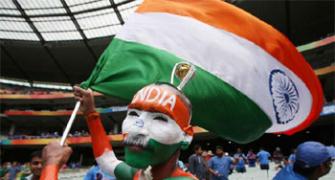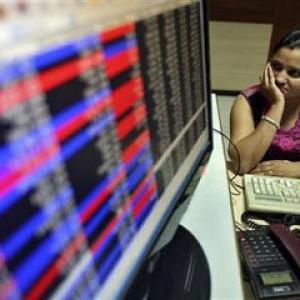Biggest culprit behind India's eroding tax base is excise, says T N Ninan.
 The big bad truth about Indian government budgets is that they are too small. The total tax revenue collection by the central government peaked at 11.71 per cent in 2007-08, the year before the western financial crisis roiled the economy. For the year that is about to close, tax revenue is expected to be only 9.93 per cent of GDP. If we had the revenue-GDP ratio of seven years ago, taxes would have been higher by about Rs 2,25,000 crore (Rs 2,250 billion).
The big bad truth about Indian government budgets is that they are too small. The total tax revenue collection by the central government peaked at 11.71 per cent in 2007-08, the year before the western financial crisis roiled the economy. For the year that is about to close, tax revenue is expected to be only 9.93 per cent of GDP. If we had the revenue-GDP ratio of seven years ago, taxes would have been higher by about Rs 2,25,000 crore (Rs 2,250 billion).
If the Centre gave 40 per cent of that money to states and retained the rest, the central fiscal deficit would have been lower by more than one per cent of GDP, at 3.0 per cent — thus meeting the desired fiscal deficit level two years ahead of schedule. Alternatively, the government could have kept the year’s deficit at 4.1 per cent of GDP and spent an extra Rs 1,35,000 crore (Rs 1,350 billion) — on everything from health and education to roads and railways, and defence.
So why has revenue fallen in the last seven years, in relation to GDP? The biggest culprit is excise, which has fallen in these seven years by more than one per cent of GDP, from 2.56 per cent of GDP to 1.47 per cent. An important reason for this is that the main excise rate in 2007-08 was 16 per cent, whereas this past year it has been 12 per cent (plus surcharges).
The rate was dropped in the 2008 Budget from 16 per cent to 14 per cent, and then to 10 per cent when the financial crisis hit later that year. These steps have been retraced only a part of the way to 12 per cent, and to 12.5 per cent for next year (with no surcharge). Since the economy is on the path to recovery, sooner rather than later the rate should be taken back to the 16 per cent that used to exist.
If businessmen protest, as they will because nobody likes paying taxes, they could be reminded that this is simply restoring the status quo ante; and necessary if they want investment in roads, railways, ports and electricity.
A second reason for the drop in the tax-GDP ratio is the drop in customs revenue, from 2.02 per cent of GDP to 1.50 per cent, although the “peak” tariff rate has been unchanged since it was dropped to 10 per cent in the 2007 Budget. Some other rates may have gone up and down, but not by enough to reduce customs revenue from 10 per cent of imports to seven per cent.
But it bears pointing out that the duty on petroleum imports was scrapped in 2011, when oil prices were high, but has not yet been re-imposed. In other words, revenue has been given up.
A third, smaller reason for the drop in the tax-GDP ratio is the drop in corporate tax revenue, in relation to GDP. While corporate “savings” rose from 9.4 per cent of GDP to 10.9 per cent in 2013-14, the share of corporate tax in GDP fell somewhat, from 3.72 per cent of GDP to about 3.49 per cent. So companies too have been getting away with a lighter touch from the taxman.
Now, no one likes paying taxes. But if governments try to make people happy by not imposing taxes, they will have no money for the essentials. To take one result of the budgetary squeeze that results when a lax tax attitude becomes policy, the capital outlay on defence would have been Rs 12,000 crore (Rs 120 billion) more this past year if its share of GDP had been protected.
Such higher spending over a number of years would have paid for much of the armaments that the country is not buying, for want of budgets — aircraft, ships, artillery. In short, there is a price (including national security) to be paid for eroding the tax base of the economy.










